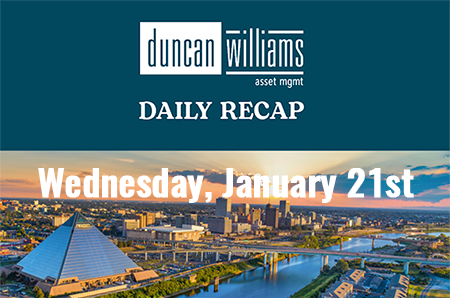So what did we learn from the policy decision, economic projections and Powell’s press conference on Wednesday?

Here are our five largest takeaways.
1. No “pivot” coming this year
Investors are currently betting that the Fed will cut rates before the end of the year, with interest rates ending 2023 somewhere between a half point and three-quarters of a point lower than where they are now (a range of 4.75% to 5%). But investors are wrong, said Powell at his press conference on Wednesday.
Powell said that the central bank anticipates growth will slow and inflation will decline gradually this year and next year. “In that most likely case, if that happens, participants don’t see rate cuts this year,” he said.
While the Fed is data dependent and future changes to interest rates are “uncertain,” he said, a cut to interest rates this year is not in the central bank’s “baseline expectation.”
2. But maybe a pause
Policymakers in their statement on Wednesday got rid of prior language that forecast “ongoing increases” to the interest rate and instead wrote that the committee “anticipates that some additional policy firming may be appropriate.”
This is a case of classic Fed speak, where small changes to language have a lot of implied meaning. Powell urged investors at his press conference to focus less on “policy firming” and more on “some” and “may.”
So what does that mean?
Before the banking crisis, the Fed was fairly certain that more rate hikes would be coming in the future. Now, they may push the pause button.
Still, hitting pause on rate hikes is not the same as hitting stop altogether. Powell said on Wednesday that while the Fed has made some progress on bringing down inflation, there’s still a long way to go.
“The process of getting inflation back down to 2% has a long way to go and is likely to be bumpy,” he said.
The Fed will be assessing data and the impact of its rate hikes in deciding how to proceed with policy, he said. “Inflation has moderated somewhat since the middle of last year, but the strength of these recent readings indicates that inflation pressures continue to run high,” Powell said.
3. More banking regulation is needed
While Powell repeatedly made assurances that the US banking system was sound and resilient, he did say that management at Silicon Valley Bank “failed badly,” and exposed its customers to “significant liquidity risk and interest rate risk.”
“My only interest is that we identify what went wrong here,” he said, adding that there needs to be stronger supervision and regulation in order to prevent more bank collapses and runs.
But Powell said the Fed wouldn’t jump to conclusions, adding that it would be “inappropriate for me at this stage to offer my views on what the answers might be.”
4. But the banking crisis may help bring down inflation
Wednesday’s Before the Bell focused on how the recent banking meltdown may have done some of the Fed’s work for it. Powell seemed to agree with that notion during his press conference.
The banking crunch is “likely to result in tighter credit conditions for households and businesses, which would in turn affect economic outcomes,” he said. Still, “it’s too soon to tell how monetary policy should respond.”
Fears of a bank run cause lenders to take fewer risks with their capital reserves to ensure they have enough cash to cover any potential withdrawal requests. That means banks may stop lending money to some borrowers, prevent some businesses from getting loans and issue fewer mortgages. It also means the economy would cool and potentially lead to layoffs and a housing market slowdown.
The Fed, in its fight against inflation, has been trying to do exactly that: Slow the economy. So rate hikes may not be necessary anymore to beat back rising prices.
On the other hand, the banking meltdown may not slow the economy. Powell said the Fed is watching closely.
“It’s possible that these events will turn out to have very modest effects on the economy, in which case inflation will continue to be strong, in which case, you know, the path might look different,” Powell said.
“It’s also possible that this potential tightening will contribute significant tightening in credit conditions over time. And in principle, that means that monetary policy may have less work to do. We simply don’t know.”
5. Job losses are a risk Powell is willing to take
The Federal Reserve expects unemployment to rise as it cools the economy in an attempt to bring down inflation.
By the Fed’s own prediction, the unemployment rate will rise to 4.5% by the end of the year, up from 3.6% last month. That could translate to more than 1 million more Americans out of work by the end of 2023.
Powell said that’s an uncertain but acceptable outcome: “We have to bring inflation down to 2%,” he told me in response to a question I asked Wednesday about the risk of snowballing unemployment. “There are real costs to bring it down to 2%. But the costs of failing are much higher.”
“If the central bank doesn’t get inflation back in place … you can have a long series of years where inflation is high and volatile. And it’s hard to invest capital. It’s hard for an economy to perform well. And we’re looking to avoid that,” Powell said.












